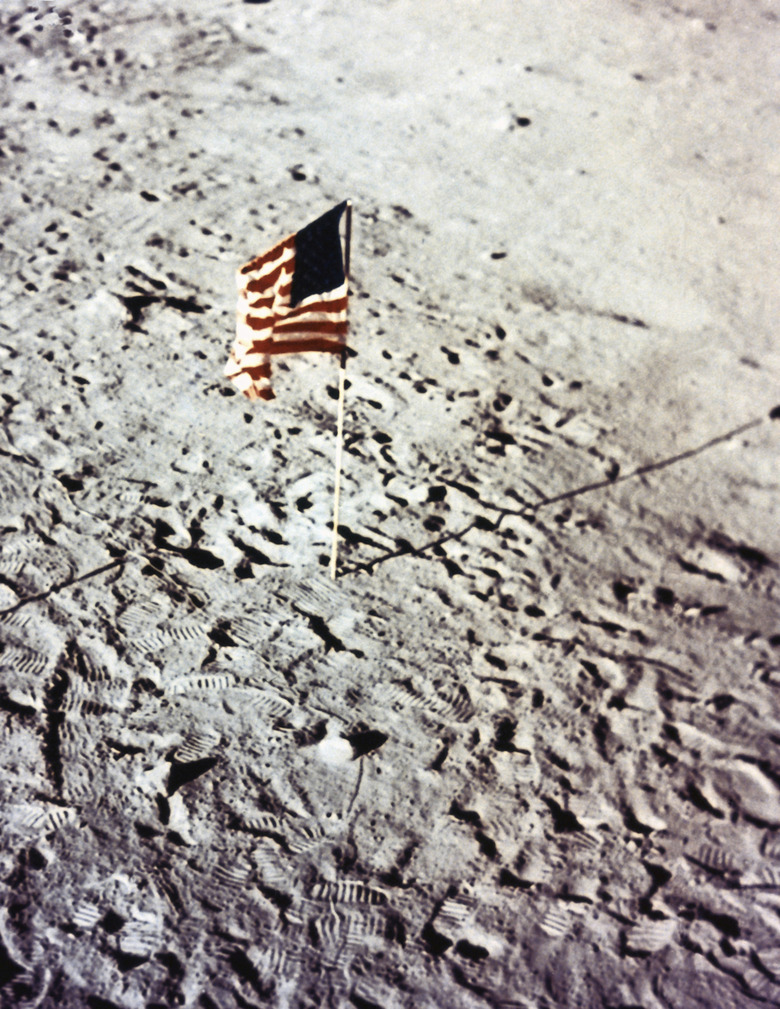Pros & Cons Of Returning To The Moon
From 1969 to 1972, 24 men traveled from the Earth to the moon, and 12 of them landed on its surface. Since then, the only return visitors to Earth's satellite have been unmanned probes, despite the continued development of space travel technology. Another manned mission to the moon would offer benefits to humanity, but the difficulties associated with such a project are hard to ignore.
Logistics
Logistics
The biggest problem with a return to the moon is the time and money required to get there. Currently, no spacecraft rated for human flight exists that can reach the moon, since manned spaceflight has been limited to Earth orbit since 1972. Developing a new launcher system, testing it and going through all the steps required to return astronauts to the lunar surface could take a decade or more and cost billions of dollars. With NASA's budget constantly under pressure, getting such a program off the ground is difficult, despite support among citizens and even politicians for a return flight.
Exploration
Exploration
One of the biggest benefits of going back to the moon would be the continued scientific exploration of Earth's only satellite. The six missions that landed on the moon only explored a few square miles of the lunar surface, and much of that examination was cursory at best. Much of the mineral history of the moon remains unknown, and further exploration could answer many questions about the moon's formation and early history. Orbital unmanned probes can take pictures of the moon's surface and analyze the mineral content of the crust, but these examinations cannot compare with the knowledge gained from actual samples.
Focus
Focus
Another downside of a return to the lunar surface would be the program's effects on other NASA objectives. Mars remains a long-term goal for the space program, but the challenges of reaching Mars and the challenges of reaching the moon are substantially different. A decision to shift resources toward a lunar mission could negatively affect the Mars program, asteroid rendezvous missions and even the International Space Station due to the demands of a manned landing mission. An increase in NASA's funding could help offset this problem, but even in the heart of the space race the agency had difficulty protecting its budget from Congress.
Permanence
Permanence
The best long-term reason to return to the moon is that any lunar mission is a step toward a permanent human habitation outside of Earth. The International Space Station will be home to astronauts for many years to come, but any object in orbit is necessarily a temporary one, and eventually the ISS will crash into the ocean at the close of its mission. A base on the moon, however, could be permanent and an important stepping stone for further human exploration of the solar system.
Cite This Article
MLA
Kazmeyer, Milton. "Pros & Cons Of Returning To The Moon" sciencing.com, https://www.sciencing.com/pros-cons-returning-moon-21475/. 24 April 2017.
APA
Kazmeyer, Milton. (2017, April 24). Pros & Cons Of Returning To The Moon. sciencing.com. Retrieved from https://www.sciencing.com/pros-cons-returning-moon-21475/
Chicago
Kazmeyer, Milton. Pros & Cons Of Returning To The Moon last modified August 30, 2022. https://www.sciencing.com/pros-cons-returning-moon-21475/
